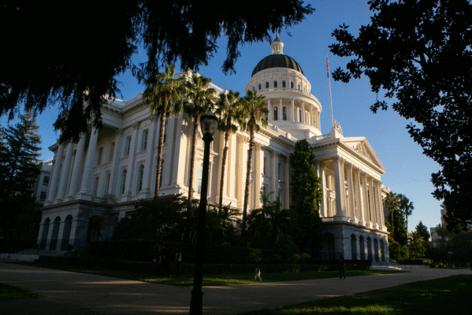4 things to know about California Senate Democrats' plan to fix the budget deficit
Published in News & Features
SACRAMENTO, California — California Senate Democrats last week unveiled their plan to take early action to address the state’s towering budget deficit.
The caucus is calling the “Shrink the Shortfall” plan the first step of an ongoing process to address a budget which is between $38 billion and $73 billion in the hole.
“The quicker we move, the quicker we’ll be able to reduce the deficit, and we know we have to move decisively because the budget shortfall is real and serious,” Senate President pro Tem Mike McGuire, D-North Coast, said in a statement.
This marks McGuire’s first budget as leader of the Senate Democratic Caucus, and Sen. Scott Wiener’s first as chair of the Senate Budget and Fiscal Review Committee.
In a statement, Wiener said that the second step of the budget strategy will be unveiled later this spring, likely after California Gov. Gavin Newsom unveils his revised budget in May.
After the May revision, also known as the May Revise, is released, the Assembly and Senate will have to work together to hash out a budget for Newsom to sign no later than June 15, the constitutionally set deadline for lawmakers to approve a budget.
Here are some things to know about the proposal.
Senate Democrats are largely following Newsom’s lead
Earlier this year, Newsom laid out his proposal to address the deficit, including proposing several cuts and spending deferrals.
The Senate Democrats’ plan largely follows the governor’s lead, approving most of his proposals.
One exception: Newsom called for a reduction of $413.3 million for the Department of Water Resources and the Wildlife Conservation Board for watershed climate resilience. The Senate Dems proposed halving that cut, for a total of $206.7 million.
Senate Democrats want $17 billion in spending solutions
While the early action plan doesn’t erase the entire deficit, it would shave more than $17 billion off of it.
The proposal identified the easier changes to make, while saving the more challenging fiscal decisions for later this spring when lawmakers have a more complete budget picture.
The proposal calls fro $1.2 billion in cuts for the 2023-24 fiscal year, and another $2.1 billion in cuts for 2024-25, for a total of $3.3 billion in spending reductions.
It also calls for $4.7 billion in borrowing for those two fiscal years, $3.9 billion in fund shifts, $3.2 billion in delayed funding and $2.1 billion in deferrals, for a total of $17.1 billion in savings.
The biggest reductions are in public safety, transportation and labor
The Senate Democratic Caucus early action proposal breaks down the savings by the five budget subcommittees.
The greatest spending reductions will be made by the subcommittee that deals with public safety, transportation and labor. That subcommittee will oversee a spending reduction of more $5.8 billion, including $1 billion in cuts.
Among the cuts being proposed are $762 million in reductions associated with vacant job positions in various departments.
The remaining subcommittees handle education, resources and energy, health and human services, and general government.
The education subcommittee will see $1.8 billion in spending reductions, while the resources and energy subcommittee will see $3.7 billion in cuts. The health and human services subcommittee will see $4.8 billion and the general government subcommittee will see $720 million.
Senate Democrats want to use the Rainy Day Fund
While the Senate Democrats’ plan addresses part of the shortfall, Newsom’s plan to draw down about nearly half of the state’s reserves would make up another part of the deficit.
If the “Shrink the Shortfall” solutions are adopted, and Newsom uses about $12.2 billion from the state Rainy Day Fund, Senate Democrats estimate the remaining deficit to be anywhere from $8.6 billion to $23.6 billion.
“This is a reasonable proposal, as it leaves roughly $13 billion remaining in the fund to assist the budget in 2025-26 or later. This proposal ensures that the Rainy Day Fund will last through at least three years of this downturn – from 2023-24 through at least 2025-26 – which is a much more responsible approach then depleting the fund in one budget cycle,” according to the budget proposal.
____
©2024 The Sacramento Bee. Visit at sacbee.com. Distributed by Tribune Content Agency, LLC.







Comments